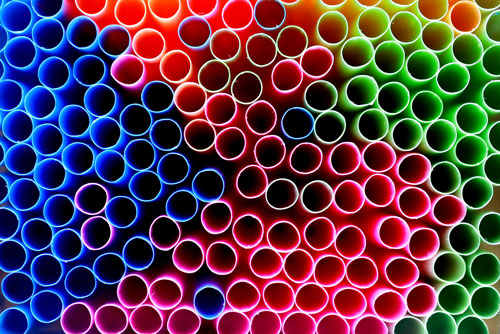Even if you haven’t seen the disturbing viral video with the injured sea turtle, you know plastic straws are bad. So bad that in January, California became the first U.S. state making it illegal for restaurants to automatically provide them, an effort to reduce the 500 million used daily nationwide.
According to the World Economic Forum, by 2050 the ocean will contain more plastic than fish pound for pound. Despite recent groundbreaking inventions that have successfully helped to clear the littered seas, plastic continues to end up in our oceans. According to the Ocean Conservancy, straws are among the top 10 items found during beach clean-ups. This is because the plastic tubes are too lightweight to be easily recycled, so they become trash and often end up in the ocean, polluting the water and eventually killing seabirds, marine animals, and fish.
But thanks to the efforts of organizations like the Surfrider Foundation in California and Chicago’s Shedd Aquarium, a wave of change is sweeping the nation, encouraging more and more people to swap their plastic straws for paper. Also, passionate students involved in the Straws Upon Request campaign are trying to convince management at restaurants to only offer straws on request. How can you help? Before ordering, say: “No plastic straw, please,” and say why.
The Numbers

Here are a few important numbers about straws from the Surfrider Foundation:
8 million tons
Amount of plastic dumped into oceans every year.
50 percent
Percentage of plastic that is used once and then thrown away.
500 million
Number of drinking straws used every day.
91 percent
Percentage of plastic that isn’t recycled.
1,200
Number of animal species that are impacted by plastic through ingestion or entanglement.
90 percent
Amount of floating ocean trash that is plastic.
450
Years it takes plastic to degrade.
Alternative Straws

If you want to help the environment, consider sipping through one of these other materials:
Bamboo
Pros: No changes in straw temperature
Cons: Change taste of beverages; difficult to clean
Get it at: Bambu Home
Glass
Pros: See-through so you know if they’re clean; no change in taste
Cons: Breakable; not as safe for children; not good for travel
Get it at: Simply Straws
Paper
Pros: Inexpensive; decorative
Cons: Change taste of beverage; get mushy, fall apart
Get it at: AArdvark Straws
Silicone
Pros: Easy to clean; long-lasting; durable
Cons: Odd mouthfeel
Get it at: Softy Straws
Steel
Pros: Not breakable; travel friendly
Cons: Not see-through; temperature sensitive
Get it at: Strawtopia
Straw
Pros: Biodegradable
Cons: Not durable; expensive
Get it at: HAY! Straws
This article originally appeared in the March 2019 issue of Marin Magazine.
Join the Conversation
National Skip the Straw Day is Feb. 22, 2019. Join the conversation on social media by using #nationalskipthestrawday, #skipthestraw, or Shedd Aquarium’s #SheddTheStraw.
More from Make It Better:
—8 of the Coolest Ways Chicago Has Gone Green
—4 Stunning Resorts That Are Equal Parts Eco-Friendly and Luxurious
—7 Eco-Champions Bringing Positive Change and Sustainability to Chicago and Beyond

